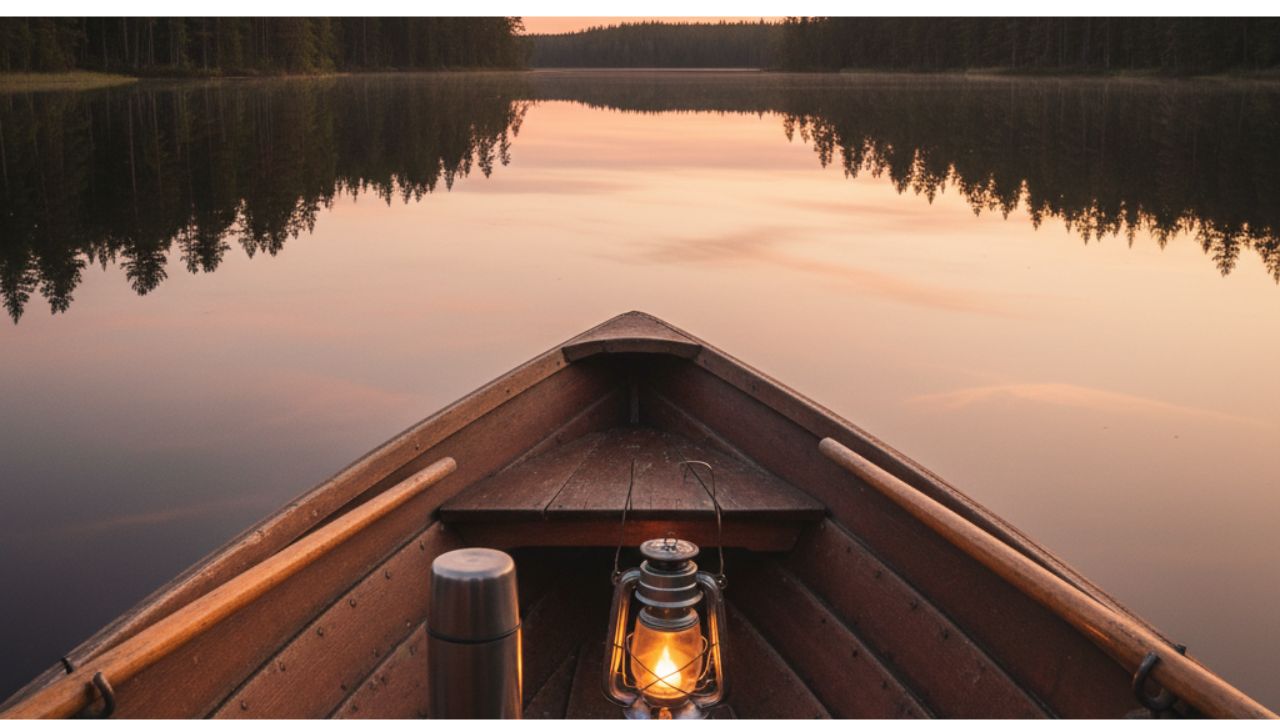For many, a boat ride is simply a leisurely way to pass time. But for Finns, veneajelu—literally translated as “a boat trip” or “boat ride”—holds a far deeper meaning. In a country defined by its relationship with nature, water, and tranquility, veneajelu is not just recreation; it is a way of connecting with Finland’s essence. With over 180,000 lakes and an extensive coastline stretching along the Baltic Sea, Finland’s landscape seems almost designed for boating. From the smallest wooden rowboat to modern motorboats gliding through mirror-still waters, veneajelu is both a national pastime and a quiet ritual of peace.
A Land Shaped by Water
Finland’s geography has always tied its people to water. The country’s name in Finnish, Suomi, is thought by some linguists to be linked to the word suo, meaning “swamp” or “wetland.” Water surrounds Finnish life in every direction—lakes, rivers, islands, and the sea. The sheer abundance of these waterways means that for many Finns, the nearest lake or shoreline is never far away.
Historically, boats were not a luxury but a necessity. They connected isolated villages, carried goods, and linked families across vast networks of lakes. Even today, small boats remain essential in the Finnish archipelago, where thousands of islands are accessible only by water. Over centuries, what began as a means of survival evolved into a cherished cultural practice. Now, when Finns speak of veneajelu, they often mean much more than transportation—they refer to a cherished escape, a journey into calm.
The Spirit of the Finnish Summer
Summer in Finland is brief but magical. After months of snow and darkness, the arrival of warm sunlight feels like a rebirth. The lakes thaw, the forests bloom, and Finns flock to their summer cottages—mökit—which often sit right on the water’s edge. And almost inevitably, where there is a cottage, there is a boat waiting by the dock.
A typical veneajelu in summer might begin in the soft evening light. Families or friends gather, perhaps with a thermos of coffee and freshly baked korvapuusti (cinnamon buns), before pushing off from the shore. The air carries the scent of pine and fresh water. The only sounds are the gentle hum of the motor, the splash of oars, or the call of a distant loon. For many Finns, these moments define the summer—the effortless stillness of being on water, surrounded by nature’s quiet beauty.
Veneajelu as a Mindset
There is also a deeper, almost philosophical layer to veneajelu. In Finland, nature is not something separate from human life; it is part of daily existence and emotional well-being. A veneajelu embodies this connection. It invites slowness in a world that often values speed.
When one is out on a boat, especially in Finland’s labyrinth of lakes, there is a sense of detachment from the everyday world. The phone signal may fade, time seems to pause, and one’s thoughts begin to drift like ripples on the water. Many Finns describe this as a kind of meditation—a mental reset that comes naturally when surrounded by still waters and open horizons.
The Finnish concept of hiljaisuus (silence) is also intertwined with veneajelu. Silence is not emptiness in Finland—it is richness. It is the space where the mind rests and the heart listens. Out on the lake, silence feels almost sacred. It’s no wonder that many Finns consider their best thinking to happen while boating.
Tradition Meets Modernity
Though the essence of veneajelu is timeless, the ways people experience it have evolved. In earlier generations, most boats were simple rowboats or small wooden motorboats, often handmade by family members. Today, while many Finns still cherish traditional wooden designs, there is also a thriving modern boating culture. Sleek fiberglass speedboats, electric-powered vessels, and even luxury yachts can be found on the waters near major cities like Helsinki, Turku, and Tampere.
Yet, regardless of technology, the purpose remains the same—to be on water, to feel free, to enjoy the rhythm of nature. For some, veneajelu means a quick outing to a nearby island for a picnic; for others, it means an extended trip through the famous Saimaa Lake District or along the archipelago trail of Turku. The joy of boating unites old and young, rural and urban Finns alike.
A Social and Cultural Bond
While solitude is an important part of Finnish identity, veneajelu is also a social activity. Families take evening rides together, couples celebrate midsummer on the water, and groups of friends gather for fishing or island-hopping adventures.
In coastal towns, community boating events and regattas are popular. During midsummer (Juhannus), many head out on boats to watch bonfires burn along the shoreline, reflecting their golden glow on the water’s surface. These gatherings are full of laughter, music, and shared meals, yet always anchored in respect for nature’s balance.
Boating has also influenced Finnish design and craftsmanship. From the world-renowned boatbuilder Fiskars to the elegant lines of Finnish yachts like Nautor’s Swan, veneajelu has inspired an entire industry that combines practicality with understated beauty—a reflection of Finnish aesthetics and ingenuity.
Nature Conservation and Responsibility
Finns take great pride in preserving their lakes and coastlines. Clean water is not only a source of recreation but a symbol of national identity. As a result, environmental responsibility is deeply tied to veneajelu. Boaters are careful to respect speed limits near nesting areas, avoid littering, and use eco-friendly motors and fuels where possible.
In recent years, electric boating has gained popularity, reflecting Finland’s commitment to sustainability. The quiet hum of an electric motor fits perfectly with the Finnish love for peaceful travel and minimal disturbance to wildlife. Many marinas and national parks have installed charging stations, making it easier for eco-conscious travelers to enjoy veneajelu without harming the environment they cherish.
The Winter Pause
As autumn turns to winter, the lakes freeze over and the boats are brought ashore. But even then, veneajelu lingers in the Finnish imagination. People reminisce about summer evenings on the water and dream of the next season’s adventures. Some replace boats with ice skates or snowmobiles, continuing their exploration of nature in new forms. The cycle of seasons only deepens the appreciation for those fleeting months when the waters are open and the sunlight never truly sets.
Veneajelu in Finnish Art and Identity
The imagery of boating is deeply embedded in Finnish culture. Countless paintings, songs, and poems celebrate life on the water. From Jean Sibelius’s evocative compositions inspired by lakes and forests to Eino Leino’s poetry describing the quiet dignity of nature, veneajelu resonates as a metaphor for balance, freedom, and introspection.
Even Finnish cinema and literature often portray pivotal scenes set on lakes or boats, using them to symbolize emotional journeys. The gentle rocking of a boat can mirror the rhythm of life itself—sometimes calm, sometimes uncertain, but always moving forward.
Conclusion:
To outsiders, veneajelu may seem like a simple pleasure. But to Finns, it captures something profound—the harmony between humans and nature, the joy of simplicity, and the quiet strength of stillness. It is a cultural mirror, reflecting Finland’s landscapes and values: serenity, respect for the environment, and appreciation for life’s small, perfect moments.
When you glide across a Finnish lake, surrounded by endless forests and golden light, you are not merely taking a boat ride. You are participating in a centuries-old tradition, feeling the pulse of a nation that has learned to listen to its waters.
In every ripple and every breeze, veneajelu whispers the same timeless truth: sometimes, the greatest journey is simply to drift—slowly, peacefully—across the surface of the world.

